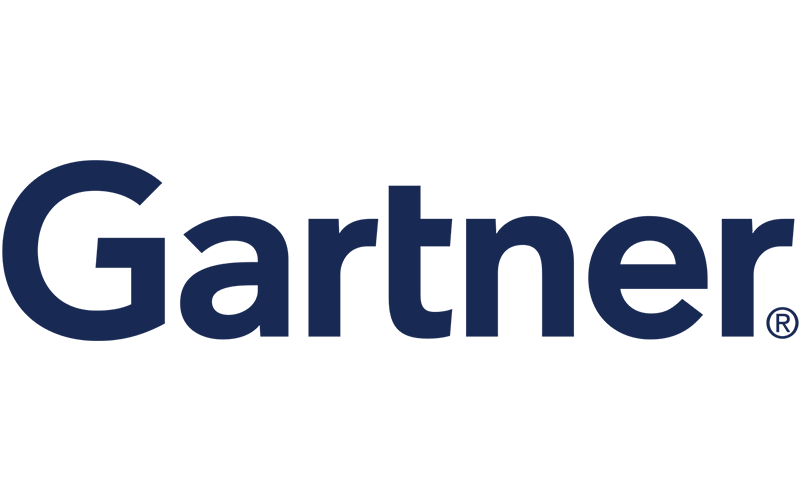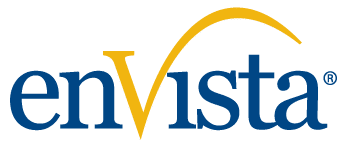LABOR MANAGEMENT SYSTEMS
Select the right labor management system for your needs.
A labor management system (LMS) is software that enhances productivity, efficiency and performance through monitoring attendance, tracking workplace activities, analyzing labor costs and completing payroll tasks.
An effective labor management system can significantly impact the efficiency and quality of your workforce’s output. These solutions cut costly management time by assigning and monitoring tasks for employees, tracking time and labor costs and generating metric and KPI reports. To customize a labor management system for your business, speak with an enVista expert today.
Home » Consulting » Software Selection & Implementation » Labor Management Systems
Choosing the Labor Management System (LMS) that fits your business.
enVista is dedicated to ensuring the successful selection and implementation of your labor management system. We guarantee delivery that is on time, within budget and ready for rapid deployment.
When supporting your LMS selection, enVista’s team will outline key factors, including:
– Unique organizational needs
– Workforce size
– Operational complexity
– Distinct industry criteria
– Essential functions like time and attendance tracking, performance and task management, compliance with labor regulations and analytics.
– Integration considerations
– Future business needs
– Cost
A successful labor management system must be customized to precisely address workflow details and align with current labor laws.
Let enVista help you select a labor management system that meets your operational goals and streamlines your workforce management. Our team comprehensively analyzes your company’s needs and delivers a system that exceeds your expectations.
Extensive System Experience
Our experts have extensive experience with labor management system applications from leading providers, including Blue Yonder, Easy Metrics, Körber, Manhattan Associates and NextView, as well as homegrown legacy solutions. This allow us to offer a diverse and extensive range of customized services, from system implementation and integration to ongoing recommendations and support.
Proprietary Labor Management System Application
enCompass™ provides the value of a world-class labor management system program without the complexity and time-draining learning curve associated with other labor management systems. enCompass™ is enVista’s proprietary, comprehensive, cloud-based labor management application that helps organizations improve operational cost-effectiveness.
Proven enABLE Methodology
Our software implementation methodology consists of four key phases:
- Assess – evaluate operational requirements to determine how to resolve business
- Build – execute upon the system design.
- Learn – train and transition knowledge to the client.
- Execute – execute on the plan.
Lean Process Improvements
Our approach emphasizes the deployment of manufacturing and distribution best practices through operations improvements, data integration, productivity tracking, engineered labor standards and payroll incentives across your entire facility.
enVista’s data integration strategy ensures all systems collaborate effectively to provide real-time transparency and actionable insights into resolving even the most minor issues.
Dedicated Labor Management System Project Teams
We commit a dedicated client project team to ensure seamless implementations and go-lives. Through continuous knowledge transfer and focused training, system users are prepared to run at full speed upon project completion. This allows management to pick up where enVista left off and drive employee productivity.
Company Collaboration
Our consultants go beyond simple technology implementation to work alongside your associates at all levels, ensuring everyone understands the value of LMS and knows how to use the system effectively. This increases adoption rate and ROI and nurtures a company culture of positivity, innovation, motivation and productivity.
Leverage enVista to gain greater LMS efficiency.
Our professional labor management team is only a text away, whether you use enCompass — enVista’s proprietary, cloud-based labor management system — or benefit from our extensive experience with other applications. From implementation and beyond, you receive the support and tools necessary to:
• Elevate workforce performance
• Achieve greater operational efficiency
• Minimize labor costs
• Analyze metrics
We always consider best practice strategies. For example, a successful labor management system must be customized to address workflow details while ensuring it complies with labor regulations. Regular performance monitoring also means an LMS remains effective while continuously improving productivity and competitiveness
enVista's Labor Management Software: enCompass™
Demand for labor management systems is growing, largely due to the costs involved with attracting, training and retaining excellent employees. As a result, enVista developed the most robust and effective LMS available: enCompass.
The cloud-based enCompass system supports labor-heavy operations in various industries, including:
• Retail
• Distribution
• Manufacturing
• Supply chain management
It also:
• Offers unparalleled features to maximize efficiency and productivity
• Helps organizations improve operational cost-effectiveness
• Maximizes performance with real-time performance management, employee engagement and data analytics
enCompass can be quickly integrated into multiple sites with limited overhead expense. It conveniently combines with all major workforce LMS applications, supporting engineered labor standards development

Automated Operational Efficiency
enCompass™ leverages state-of-the-art technology to optimize labor management and operational processes that improve productivity and reduce costs. Our transparent LMS:
- Improves staff scheduling and allocation
- Aligns real-time product demand with employee skill
- Reacts transactionally to help managers quickly spot performance gaps, analyze employee effectiveness against benchmarks and recognize top-tier performers.
Labor Standards Database Access
Through enCompass, employers have access to the labor standards database, making it easier to compare operations against standards. Identifying real-time inefficiencies allows companies to quickly implement improvement strategies before issues become unmanageable.
Other benefits include:
- Accurate labor forecasting and scheduling
- Training aligned with industry standards
- Assured compliance with regulatory and legal requirements
- A comprehensive database for trend analysis
Companies can evaluate operational changes and make informed decisions that drive continuous competitiveness and success


Warehouse Labor Management Capabilities
enCompass users can incorporate warehouse labor management functionalities to:
- Monitoring employee performance
- Predicting staffing needs based on current and future workloads
- Reducing costs by preventing understaffing or overstaffing
- Minimizing noncompliance risks regarding labor and workplace regulations
- Processing orders faster
- Enhancing service
- Consolidating costly tasks
enVista Drives Productivity with Workforce Management Consulting
Workforce management consulting is more empowering than labor management system consulting, and it’s essential to know the difference between them. Simply put, workforce management consulting considers a broader range of company aspects than labor management system consulting.
For example, enVista’s tailored workforce management consulting includes:
– Employee skill development
– Communication
– Customized strategy plans
Conversely, labor management system consulting focuses on operational tasks instead of the actual workers. However, combined approaches are necessary for success.
enVista’s workforce management consultants will tailor its approaches and methods to solve singular problems hindering your company’s success.
Unmatched Success: Proven Results from Our Clients
Learn how enVista’s Labor Management System expertise can help your business:
The owner of a large warehouse business on the verge of bankruptcy contacted us for help. enCompass performed multiple tasks to find the following inefficiencies:
- Employees were taking longer routes to collect items, so enCompass suggested route optimization algorithms to decrease travel time within connecting warehouses. This expedited the packing and shipping process.
- Bottlenecks were impacting the loading and unloading areas, so enCompass recommended several dock rescheduling options.
- Floor processes were facing unnecessary pauses due to certain out-of-stock items. Using past, present and future order data, the LMS suggested a rigorous inventory replenishment system. Consequently, employees spent less time waiting for stock and more time fulfilling order requirements.

A Strategic Approach to Labor Management
Labor Projects Completed by enVista
0
Unique Client Sites
0
Recognized as a Leader
enVista has been recognized in Gartner, Inc.’s Market Guide for Supply Chain Strategy, Planning and Operations Consulting and Gartner, Inc.’s Warehousing and Fulfillment Vendor Guide, among other accolades.


Featured Insights

eBook
Distribution Center Leaders’ 4 Biggest Pain Points & How to Overcome Them: Operations Edition
Gain insight into the four key operations pain points that DC leaders are facing and tactical solutions that will get the facility back on track.

Blog
How to Create a Closed-Loop Process in Your Labor Management Program
The secret to labor management success lies in adopting a continuous process improvement mindset tailored to your organizational culture.

Data Sheet
Supply Chain Technology Selection
Unlock the full potential of your supply chain by addressing technology intricacies and maximizing ROI with enVista’s expert assistance. From overcoming vendor challenges to navigating automation and software selections, enVista offers holistic solutions aligned with integrated processes and transformation plans to ensure the right technology fit and mitigate risk.

Blog
Secrets to Ensuring Supply Chain Execution System Selection Success
By meticulously following these steps and recommendations, an organization can significantly enhance the chances of selecting a supply chain execution system that not only meets its current needs but also positions it for future success.
FAQs About How enVista's Solutions Can Work For You
A labor management system (LMS) is a software solution designed to help organizations effectively manage their workforce. LMS solutions typically include tools for tracking employee time and attendance, scheduling and assigning work, managing labor costs, and reporting on labor-related metrics.
An LMS can help organizations optimize their workforce by automating many of the administrative tasks associated with managing employees. This can lead to increased productivity, reduced labor costs, and improved compliance with labor regulations.
Some common features of an LMS include:
- Time and attendance tracking: This feature allows employees to clock in and out of work through a physical time clock or an online system.
- Scheduling: This feature allows managers to create employee schedules based on business needs and employee availability.
- Labor cost tracking: This feature allows managers to track labor costs and ensure they are staying within budget.
- Performance management: This feature allows managers to track employee performance and provide feedback and coaching to improve performance.
- Compliance management: This feature helps organizations ensure compliance with labor laws and regulations, such as minimum wage and overtime requirements.
Overall, an LMS can help organizations improve workforce management, reduce labor costs, and improve compliance with labor regulations.
A labor management system is a supply chain execution (SCE) solution that calculates a task’s expected time, provides real-time feedback and measures and reports effectiveness. It is important to note that this is a people-based program, not merely an IT project. An LMS is geared toward determining the preferred work methods (PWM) in a warehouse, which describe how to conduct the steps to complete processes or standard operating procedures (SOP). The SOP is the “what,” while a PWM is the “how.” PWM are not meant to replace SOP.
In the creation of an LMS, past company performance and metrics are reviewed and expectations are established to form a baseline. An LMS is easy to implement and quick to provide a baseline of reporting; however, baselines can be extremely sensitive to seasonality (e.g., a high-volume peak season skews monthly averages throughout the rest of the year). An LMS does also not account for process improvement changes and cannot hold workers accountable.
An LMS provides an overview of an organization’s labor productivity planning and reporting. The planning capabilities of an LMS allow organizations to decide workforce requirements for a project requiring a certain amount of labor to be performed within a certain timeframe. Labor productivity planning capabilities allow an organization to analyze and report the productivity levels of groups, individuals, and facilities against predefined performance standards.
A labor management system provides real-time visibility into labor performance metrics to ensure profitability and productivity targets are attained. LMS systems provide distribution center managers and warehouses with labor forecasting/planning tools, performance visibility in real-time and labor standards. All of this helps organizations improve employee coaching, management decisions and productivity. Ultimately, a properly implemented LMS will lower costs and increase productivity across the entirety of an organization.
Facilities operate at 60-70 percent of their potential without an LMS. Often, this is because metrics are not in alignment with company expectations. Without this alignment, there is a lack of clear expectations or goals, formal processes in place, timely feedback to workers and training programs.
From a management perspective, an LMS is needed to accurately forecast, budget and plan for labor and material requirements, as well as to improve the overall efficiency of an operation. At the supervisor level, an LMS is needed to execute the work that is planned and to determine the performance of the facility, job or people. At the employee level, an LMS is needed to understand how to perform a task and the length of time a task should take.
Companies should consider an LMS because it is very low risk; it is a non-mission critical application with a rapid ROI. An LMS is also highly sustainable and require minimal maintenance compared to warehouse management system (WMS)/transportation management system (TMS).
A labor management system (LMS) can provide a variety of benefits for businesses and organizations. Some of the main benefits include:
- Understanding of labor forecasting and scheduling needs with workforce management tools ensure the existing labor resources are optimized to reduce overtime and labor costs
- Reduced onboarding and training ramp-up time through a proactive comprehensive training and change management program
- Easy access to real-time dashboards and reports with data from multiple sources to provide immediate feedback to supervisors and employees regarding task management and their teams, as well as individual performance
- Understanding of cost to serve requirements based on unique customer shipping and receiving in today’s omnichannel supply chain
- Ability to offer an incentive-based compensation program, leading to reduced turnover, lower cost per unit and increased productivity gain
An LMS delivers a strategic framework for Lean process improvement. These systems aid in the elimination of non-value-added tasks within your labor supply chain. There is increased individual and team performance – up to 30 percent productivity improvement. An LMS also leads to reduced labor costs and increased profitability. These benefits begin to accrue for some organizations in as little as 12 weeks from implementation.
An LMS also gives companies improved manpower planning and scheduling, reduced dependency on temporary labor, reduced overtime, improved customer service and optimized use of systems and equipment. Employees tend to be more motivated and have clearer goals, thanks to feedback offered by supervisors and the LMS. There is reduced variability of task performance, improved employee morale and retention and enhanced communication between employees and management.
Productivity tends to increase because people do not mind being measured. They are comfortable being measured against a work standard if they know it is fair and accurate. Employees like goals and feedback; they want to know how they are performing against their goals and against their peers.
There are two components to labor management system costs: software and implementation services costs.
Software Cost
The software cost is made up of 3 cost components: per user cost (floor associates and operations staff), hosting cost (servers/infrastructure/3rd party license costs), and Support & Maintenance Fees (typically a multi-year agreement)
There are 2 ways the software can be purchased: either through a 1-time perpetual license fee with recurring support and maintenance or through a Software as a Service (SaaS) fee.
A perpetual license fee can range anywhere from $300 to $1500+ per user with an annual Support & Maintenance Agreement ranging from 15 to 25% of the License fee depending on level of service; i.e. working hours vs 24 x 7 x 365 days/year.
SaaS agreements can range from a 1 to 5 years agreement with 2 to 3 being the norm and are typically invoiced on a monthly basis. The fees range from $10-20 per user per month up to $40-50 per user per month.
Implementation Services Costs
For a new implementation involving the implementation of discrete standards, training/change management, testing, and go-live support, cost estimates typically range from $12K to $14K/week, which can be applied to the week estimates to get overall costs.
There are two common ways to implement a labor management system; either with or without engineered labor standards. Additionally, an incentive-based pay or pay-for-performance program could be layered into either approach.
The length it takes to implement a labor management system is dependent on scope and complexity, but can typically be done anywhere from 6 weeks to 26 weeks.
One of the greatest challenges facing organizations today is workforce and labor management. Even with the advancement of automation and robotics, the need for employees won’t go away. Finding the right solution for your organization is challenging, but having the right labor management system in place can help significantly enhance your workforce’s overall performance. There are a number of labor management systems available for you to consider, but below are some of the most advanced systems that can be integrated into your supply chain today.
Blue Yonder
Blue Yonder’s labor management system aims to give granular insight while still providing high level views to provide insight to users to fully understand their workforce. This scalable solution allows organizations to create best practices and define expectations, all while tracking warehouse and associate activity to enhance accountability.
enCompassTM
enVista’s own labor management system, enCompassTM, offers quick time to value, a simple solution that provides robust results, clear visibility into real-time performance, all at an affordable price using a subscription-based model.
Retail and supply chain leaders require real-time visibility into labor performance metrics to ensure productivity and profitability targets are attained in today’s competitive omnichannel environment. enVista’s implementation of preferred work methods, in conjunction with a comprehensive change management training program and accurate productivity goals based on industrial engineering principles, form the foundation of a labor management program that helps companies achieve increased performance and profitability. From warehouse labor management to shipping labor management, a good LMS can help you make the most of your workforce and drive down overall costs.
We will develop preferred work methods and train your staff and warehouse managers in how to perform the processes in a safe, efficient and quality-conscious manner. Using master standard dData (MSD) or time study technique, we will develop engineered labor standards or reasonable expectations to measure facility, shift, team, individual and/or task performance.
We will assist in the configuration, training and usage of internal or commercially based labor management systems. Our team will train your leaders in how to coach your employees and provide feedback that is positive in nature, meaningful and appropriate.
Our engineered standards associated with each function measure actual work completed against established benchmarks, making it easy to determine where resources need to be allocated for increased employee productivity and visibility, improved service levels and associate motivation and reduced overall labor costs.
Let's have a conversation.®
We deliver exceptional solutions. Learn how we can accelerate results for you and your organization.



